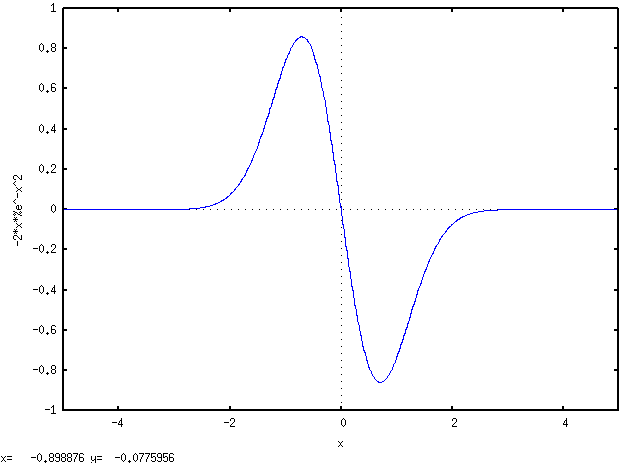The $\delta(x)$ Dirac delta is not the only "point-supported" potential that we can integrate; in principle all their derivatives $\delta', \delta'', ...$ exist also, do they?
If yes, can we look for bound states in any of these $\delta'^{(n)}(x)$ potentials? Are there explicit formulae for them (and for the scattering states)?
To be more precise, I am asking for explicit solutions of the 1D Schroedinger equation with point potential,
$$- {\hbar^2 \over 2m} \Psi_n''(x) + a \ \delta'^{(n)}(x) \Psi(x) \ = E_n \Psi_n(x) $$
I should add that I have read at least of three set of boundary conditions that are said to be particular solutions:
- $\Psi'(0^+)-\Psi'(0^-)= A \Psi(0)$ with $\Psi(0)$ continuous, is the zero-th derivative case, the "delta potential".
- $\Psi(0^+)-\Psi(0^-)= B \Psi'(0)$ with $\Psi'(0)$ continuous, was called "the delta prime potential" by Holden.
- $\lambda \Psi'(0^+)=\Psi'(0^-)$ and $\Psi(0^+)=\lambda\Psi(0^-)$ simultaneusly, was called "the delta prime potential" by Kurasov
The zero-th derivative case, $V(x)=a \delta(x)$ is a typical textbook example, pretty nice because it only has a bound state, for negative $a$, and it acts as a kind of barrier for positive $a$. So it is interesting to ask for other values of $n$ and of course for the general case and if it offers more bound states or other properties. Is it even possible to consider $n$ beyond the first derivative?
Related questions
(If you recall a related question, feel free to suggest it in the comments, or even to edit directly if you have privileges for it)
For the delta prime, including velocity-dependent potentials, the question has been asked in How to interpret the derivative of the Dirac delta potential?
In the halfline $r>0$, the delta is called "Fermi Pseudopotential". As of today I can not see questions about it, but Classical limit of a quantum system seems to be the same potential.
A general way of taking with boundaring conditions is via the theory of self-adjoint extensions of hermitian operators. This case is not very different of the "particle in 1D box", question Why is $ \psi = A \cos(kx) $ not an acceptable wave function for a particle in a box? A general take was the question Physical interpretation of different selfadjoint extensions A related but very exotic question is What is the relation between renormalization and self-adjoint extension? because obviosly the point-supported interacctions have a peculiar scaling
Comments
Of course upgrading distributions to look as operators in $L^2$ is delicate, and it goes worse for derivatives of distributions when you consider its evaluation $<\phi | \rho(x) \psi>$. Consider the case $\rho(x) = \delta'(x) = \delta(x) {d\over dx}$. Should the derivative apply to $\psi$ only, or to the product $\phi^*\psi$?

